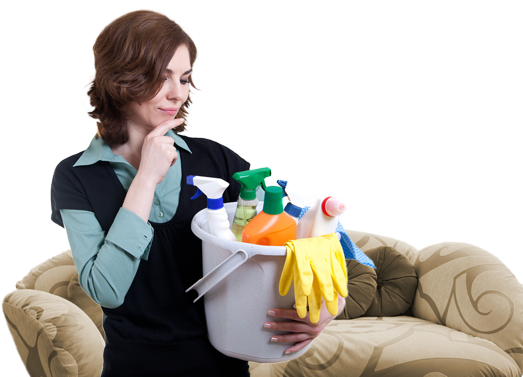Health starts here: Why indoor air quality matters
Posted on 10/06/2025
Health Starts Here: Why Indoor Air Quality Matters
Did you know that the air inside your home or office can be up to five times more polluted than outdoor air? Indoor air quality (IAQ) isn't just a topic for scientists--it's a fundamental part of our everyday well-being. With more time than ever spent indoors, especially in homes, workplaces, and schools, ensuring clean, healthy air inside has never been more critical. In this comprehensive guide, you'll discover why indoor air quality matters, the risks of ignoring it, and proven ways to breathe easier--starting today.

Understanding Indoor Air Quality: The Basics
Indoor air quality is the condition of the air found inside buildings, including our homes, offices, and public spaces. It's influenced by a range of factors--some obvious, others hidden. Poor IAQ occurs when pollutants from outside or inside sources concentrate in a confined environment, leading to adverse health effects.
What Are the Common Indoor Air Pollutants?
- Particulate matter (PM2.5 and PM10): Tiny dust, smoke, and pollen particles that can irritate lungs.
- Volatile organic compounds (VOCs): Emitted by paints, cleaning agents, furniture, and even printers.
- Mold and mildew: Thrive in damp areas, releasing spores that can trigger allergies and asthma.
- Pet dander: Tiny flecks of skin shed by cats, dogs, and other animals.
- Carbon monoxide (CO): Colorless, odorless gas from combustion appliances. High levels are deadly.
- Radon: A radioactive gas from soil or rock underneath buildings, leading cause of lung cancer after smoking.
- Asbestos and lead particles: Historic building materials still a risk during renovations.
- Bacteria and viruses: Spread through air, especially in poorly ventilated areas.
Why Do Indoor Pollutants Accumulate?
Unlike outdoors, where wind and weather help disperse pollutants, indoor environments trap these contaminants. Modern energy-efficient buildings often lack sufficient ventilation, leading to higher pollutant concentrations. Cooking, cleaning, using certain appliances, or even burning candles can all increase indoor air pollution levels without you noticing.
The Link Between Indoor Air Quality and Health
Ignoring indoor air quality risks more than just comfort. It directly affects your health and well-being. Short-term exposure can cause mild symptoms. However, long-term or repeated exposure to poor indoor air quality leads to major health problems, especially for children, seniors, and those with respiratory conditions.
Immediate Health Effects
- Eye, nose, and throat irritation
- Headaches and dizziness
- Fatigue and difficulty concentrating
- Worsening allergy or asthma symptoms
- Nausea
Long-term Health Consequences
- Chronic respiratory diseases: Such as asthma, bronchitis, and chronic obstructive pulmonary disease (COPD).
- Heart disease: Long-term exposure to indoor pollutants increases cardiovascular risks.
- Lung cancer: Especially from radon, tobacco smoke, or asbestos exposure.
- Weakened immune system: Constant exposure to airborne toxins lowers the body's defenses.
- Developmental issues in children: Poor IAQ can impair cognitive and physical development.
Who Is Most at Risk?
While everyone benefits from clean indoor air, the following groups are especially vulnerable:
- Children and babies: Their developing lungs and immune systems are highly sensitive.
- Older adults: Pre-existing health conditions can worsen with poor air.
- Individuals with respiratory illnesses: Such as asthma, allergies, or COPD.
- People with weakened immune systems: Those battling chronic illness or undergoing certain treatments.
- Pregnant women: Air pollution can impact both mother and developing baby.
Sources of Indoor Air Pollution
Understanding the root causes of poor indoor air quality is vital for prevention and treatment. Here are the major sources lurking inside most homes and buildings:
1. Household Products
- Sprays, air fresheners, aerosols, and cleaning agents emit VOCs.
- Pesticides and paints increase chemical load in the air.
2. Building Materials & Furnishings
- Pressed-wood furniture, carpeting, and insulation can release formaldehyde and other gases.
- Older buildings may still contain asbestos and lead-based paint.
3. Heating, Cooking, and Appliances
- Combustion appliances (e.g., gas stoves, heaters) produce NOx, CO, and particulates.
- Poorly maintained HVAC systems can harbor mold and bacteria.
4. Biological Contaminants
- Mold, pet dander, pollen, dust mites, and bacteria thrive in damp or crowded areas.
5. Outdoor Pollution
- Poorly sealed windows and doors let in smog, pollen, and vehicle exhaust.
Signs Your Indoor Air Quality Needs Attention
Do you suspect your indoor air might be harming your health? Common signs of poor IAQ include:
- Unexplained health symptoms: Persistent headaches, allergies, coughing, or fatigue that improve when you leave the building.
- Musty or chemical odors: Suggesting mold or VOCs present in the air.
- Identifiable sources: Recent renovation, water leaks, or use of new furniture or carpets.
- Poor ventilation: Windows never opened, stuffy or humid air, condensation on walls/windows.
Recognizing these red flags is the first step toward a healthier indoor environment.
How to Measure and Improve Indoor Air Quality
When it comes to better indoor air quality, knowledge is power. Modern testing options and practical improvements can transform the air you breathe--starting now!
1. Testing Your Indoor Air
- DIY Air Quality Monitors: Affordable sensors track particulates, VOCs, humidity, and CO2. Great for at-home use.
- Professional Inspection: Certified specialists can test for radon, mold, asbestos, and perform comprehensive IAQ audits.
- Visual Clues: Look for mold, water stains, condensation or dust buildup.
2. Boosting Indoor Air Quality: What Works?
- Increase Ventilation: Open windows and doors when safe. Use mechanical fans and ventilation systems--especially in bathrooms and kitchens--to exhaust pollutants outdoors.
- Maintain HVAC & Air Filters: Replace filters regularly. Consider high-efficiency (HEPA) filters for capturing small particles.
- Control Humidity: Use dehumidifiers if levels exceed 50%, and fix leaks promptly to prevent mold.
- Reduce VOCs: Choose low-VOC or natural cleaning products, paints, and furnishings.
- Embrace Indoor Plants: Certain houseplants can reduce airborne toxins and freshen the air.
- Minimize Smoking Indoors: Make your home a smoke-free zone to eliminate tobacco toxins.
- Clean Smart: Vacuum with HEPA filters, dust with damp cloths, and wash bedding often to remove allergens.
- Install Radon & CO Detectors: Early detection saves lives--install in basements and near bedrooms.
- Avoid Scented Candles & Sprays: These often emit harmful particulates and chemicals.
Healthy Home Habits
- Take off shoes at the door to prevent outside pollutants from spreading indoors.
- Bathe pets regularly and brush them to reduce dander.
- Store chemicals and paints in sealed containers outside living areas.
- Wash or replace curtains and soft furnishings that trap dust and allergens.
- Keep windows clean to improve natural airflow and light.
Benefits of Good Indoor Air Quality
Improving your indoor air quality does more than just prevent sickness. The benefits to your body, mind, and life are profound:
- Better respiratory health: Fewer coughs, colds, and asthma attacks.
- Stronger immune system: Less frequent illness and faster recovery rates.
- Improved cognitive function: Enhanced concentration, memory, and productivity.
- Better sleep: Fewer breathing issues at night mean deeper, more restful sleep.
- Increased comfort & wellbeing: No more headaches, watery eyes, or fatigue at home or work.
- Protection for vulnerable family members: Creating a healthy environment for children, elders, and everyone in between.
- Higher property value: Clean, healthy homes are more desirable--and sell for more.
Indoor Air Quality in the Workplace and Schools
Employees and students spend 40+ hours each week indoors. Studies show that poor office indoor air quality leads to more sick days, lower productivity, and higher healthcare costs. Classrooms with better air enjoy fewer student absences, sharper focus, and improved academic outcomes. Facility managers, business owners, and school administrators have a duty to maintain safe, healthy spaces for everyone. Regular HVAC maintenance, increased ventilation, and limiting use of harsh chemicals are essential steps toward cleaner indoor air.
Indoor Air Quality and Seasonal Changes
As seasons shift, so do indoor air quality threats. Winter brings closed windows and potential mold or CO dangers. Spring and summer increase pollen, humidity, and mold risks. Adapting your air quality strategy throughout the year is crucial for consistent health benefits.
- Winter: Use exhaust fans, maintain humidifiers properly, and check heating systems for leaks.
- Spring: Clean HVAC ducts, replace filters, and tackle any moisture or mold issues from winter.
- Summer: Watch humidity levels, ventilate kitchens and bathrooms, and keep pollen at bay by closing windows on high-count days.
- Fall: Address any water leaks or dampness and do a deep clean before heating season starts.

The Future of Indoor Air Quality: Better Breathing for All
Rising health and wellness awareness, along with advanced technology, is making indoor air quality solutions more accessible. From smart air purifiers, real-time apps, and green building standards, to a new focus on holistic, healthy spaces, the future looks promising. Understanding and improving your indoor air isn't just a trend--it's a necessity for modern living, and the cornerstone of lifelong well-being.
Take Action: Breathe Easy, Live Better
- Inspect and maintain your HVAC systems regularly.
- Ventilate often to bring in fresh air.
- Monitor indoor pollutant sources and address them immediately.
- Invest in air quality monitors for ongoing awareness.
- Choose low-emission, eco-friendly products for your home or office.
If you want to ensure your indoor air quality is supporting--not sabotaging--your health, now is the perfect time to act. Because real wellness, starts with the air you breathe.




